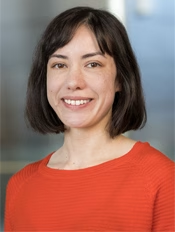University of Wisconsin-Madison and Japan’s National Institute for Fusion Science (NIFS) leaders have signed task agreements that will strengthen collaboration and cooperation between the two institutions to advance science and technology for realizing fusion energy.
 NEEP Assistant Professor Adelle Wright
NEEP Assistant Professor Adelle Wright
“These new agreements position UW-Madison at the forefront of stellarator research in the United States,” says Adelle Wright, an assistant professor in the UW-Madison Department of Nuclear Engineering and Engineering Physics. “We are looking forward to building on UW-Madison’s strong history of fusion science research and education and developing deeper collaboration with NIFS to enable significant breakthroughs in this field.”
In August 2024, UW-Madison hosted U.S. Department of Energy Office of Fusion Energy Sciences Research Director John Mandrekas, NIFS Director General Zensho Yoshida, and eight other NIFS researchers, for a three-day strategic planning workshop on fusion energy. The event included research presentations and tours of UW-Madison’s fusion research facilities in the Department of Nuclear Engineering and Engineering Physics and the Department of Physics to showcase the capabilities and expertise offered at the university. Organized by Wright, the workshop culminated in the signing of the task agreements, which were added to a memorandum of understanding that already exists between UW-Madison and NIFS.
The collaboration between UW-Madison and NIFS will focus on research related to stellarators, which are viewed as the main alternative to tokamaks for fusion energy systems. Stellarator-type fusion devices use electromagnetic coils to create three-dimensional magnetic fields that confine a high-temperature plasma inside a vacuum chamber. The researchers plan to study large-scale phenomena as well as microphysics and turbulence that occur in these devices. The Helically Symmetric eXperiment (HSX), an optimized stellarator in the Department of Nuclear Engineering and Engineering Physics, will serve as a testbed.
“UW-Madison is a leader in theory and simulation for stellarators and boasts the world’s only quasihelically symmetric stellarator (HSX). NIFS is doing cutting-edge work with 3D configurations, so the research capabilities at both institutions are really complementary and there’s a lot we can learn from each other,” Wright says.
In addition, she says, the agreements support personnel exchange opportunities for faculty, staff and students and access to new funding sources.
Featured image caption: From left: Eric Wilcots, dean of the College of Letters & Science; Frances Vavrus, dean and vice provost of the UW-Madison International Division; NIFS Director General Zensho Yoshida; and David A. Noyce, College of Engineering executive associate dean, at the signing of the task agreements in Bascom Hall. Credit: Adrienne Nienow.